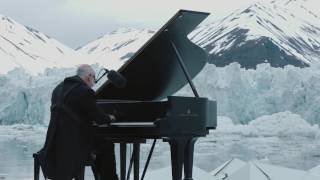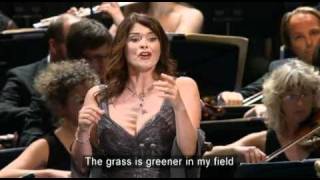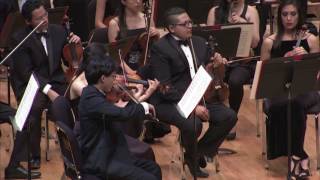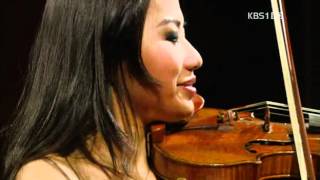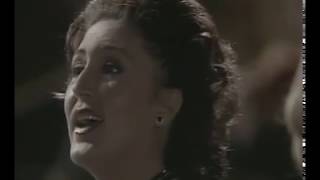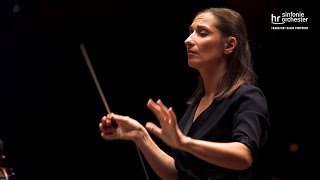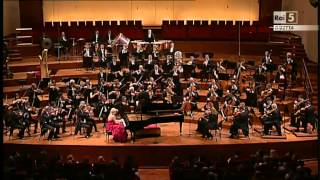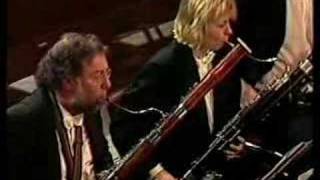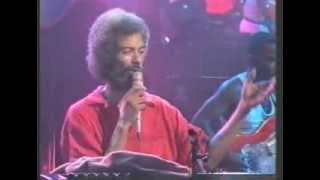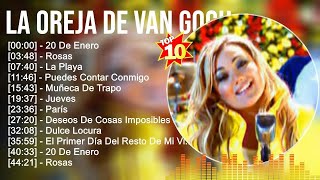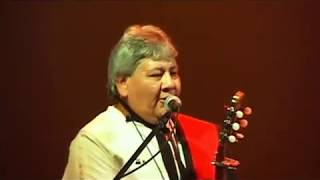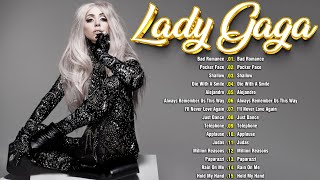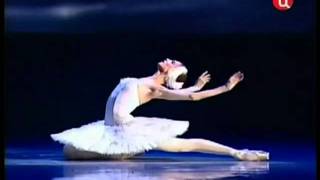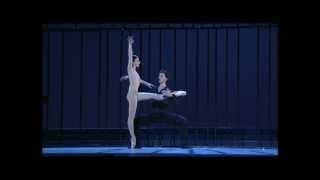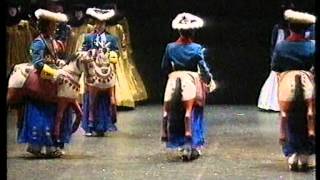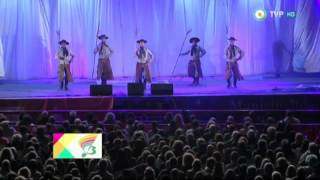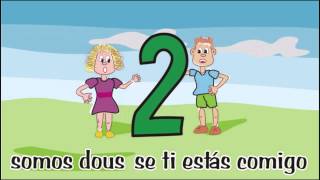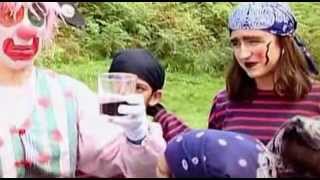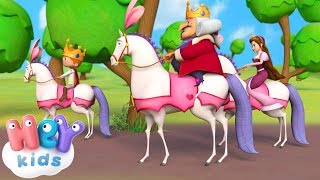November 1, World Ecology Day
November 2, Day of the Dead
Recommended music videos for initiation to classical music
Ludovico Einaudi (1955) is an Italian composer and pianist, who, trained at the Verdi Conservatory in Milan , began his career as a classical composer, later incorporating other styles and genres such as pop, rock, folk and world . It represents one of the successes of new age music in recent years, not only because of record sales, but also because of the concerts held around the world. The same year that he graduated in composition, he received a scholarship to the Tanglewood Festival, in the United States , and continued his studies with the composer Luciano Berio . He is a curious musician and open to experimenting from jazz and rock to contemporary music. Their music is ambient, meditative and often introspective.
In 2016 Einaudi participated in the Greenpeace Save the Arctic campaign video that was filmed in the Arctic . As part of the campaign, Einaudi composed Elegy for the Arctic , a musical piece that unites the voices of eight million people who have signed to save the Arctic and of which today we offer a small fragment with the author at the piano.
Joseph Canteloube (1879 – 1957) was a French composer, musicologist and author born into a family originally from the Auvergne region of France. He studied piano from the age of four and a half; After obtaining his baccalauréat , he worked in a bank in Bordeaux . He returned to his family home in Malaret due to illness, but when his health improved, he decided to pursue a career as a musician in Paris by entering the Schola Cantorum , where he was a student of Vincent d'Indy and Charles Bordes . In 1941, he joined the government of Vichy France during the Nazi occupation and wrote for the monarchist newspaper Action française . Canteloube is known for his collections of folk songs from the Auvergne region; Its lyrics are in Aurillacois Occitan and cover a period of 300 years.
Chants d'Auvergne is a work by composer Joseph Canteloube written between 1923 and 1930 and published between 1924 and 1955. It consists of five collections of traditional songs collected in Auvergne , which have been harmonized and orchestrated. The composer wrote his score for voice and symphony orchestra. He did not want to follow the original music to the letter or do something “authentic” and his work does not have a folkloric aspect. Canteloube simply wanted to give a personal interpretation to these melodies of popular origin, a bit like a French Béla Bartók or a painter in front of a landscape.
Today we offer the song Baïlèro (Shepherds Song of Haute-Auvergne), the best known of the Chants d'Auvergne , performed by the Italian mezzo Anna Caterina Antonacci
Gustav Mahler (1860-1911) was an Austrian composer and conductor born in Kaliště , now Czechia , considered one of the most eminent composers of post-Romanticism. His creative work focused on the symphony, the lied (lyrical song) and the conjunction of both concepts; To this we must add the diversity of elements with which he worked (popular melodies, military melodies, fanfares of various types...), the manifest dissonances to which the public was not accustomed and the long duration of his symphonies; If we add to this that he faced a certain anti-Semitic press due to his Jewish origins, it is not surprising that his compositions did not have the success he deserved in his lifetime.
Gustav Mahler 's Symphony No. 1 ("Titan") in D major was completed in 1888, a year before its premiere in Budapest in 1889. Today, this symphony is one of Mahler 's most appreciated, due to its great melodic richness
Third Movement. Funeral march. It begins with a double bass solo that is a variation in minor mode of the French theme "Frère Jacques", to which various instruments are incorporated. Next, a nostalgic theme appears that comes from traditional Bohemian music. The sadness of the funeral march in which these two themes alternate contrasts with grotesque passages in which popular band music seems to sound and with a lyrical episode that also comes from the Songs of a Wandering Comrade . Today we offer it in the version of the Eduardo Mata University Youth Orchestra of Mexico conducted by maestro Gustavo Rivero Weber
Edward Elgar (1857-1934) English composer born near Worcester . At the age of eight, he began his violin and piano studies. At age 22 he was appointed band director of the Powick Psychiatric Asylum ; He was part of the orchestra of the Worcester and Birmingham Festivals , performing Symphony No. 6 and Dvorak 's Stabat Mater conducted by the same composer. Faced with the difficulty of making himself known in London , he returned to Worcester to direct local bands and teach music classes. At the age of 42 he wrote the Enigma Variations that catapulted him as the most important British composer of his time. In 1904 he was knighted at Buckingham Palace ; From then on he received important recognitions and awards.
Salut d'Amour , Op. 12, is a musical work composed by Edward Elgar in 1888, originally for violin and piano. Elgar completed the piece in 1888, as an engagement gift, when he was engaged to marry Caroline Alice Roberts and called the work " Liebesgruss " ("Love's Greeting") because of Alice 's fluency with German. It was published by Schott & Co. a year later and few copies were sold until the publisher changed the title to Salut d'Amour , leaving " Liebesgruss " as a subtitle. The first public performance of the work was in its orchestral version and took place in a concert at The Crystal Palace on 11 November 1889, conducted by August Manns .
Today it is offered to us in its original violin and piano version by the American violinist, of Korean descent, Sarah Chang accompanied on the piano by the pianist Andrew von Oeyen
Recommended classical music videos
Mozart and Freemasonry . Freemasonry appeared in Europe at the end of the 17th century as a selective group of philanthropic nature, with a federal structure and with humanistic objectives, such as the search for truth, the study of human behavior, the sciences and the arts and the social and moral development of people and society; all of this based on a feeling of brotherhood, whose teachings are symbolized with elements of masonry. At the age of 28, Mozart entered the Masonic Lodge of Vienna as an apprentice ; The following month he rose to the rank of Companion and four months later he was named Master Mason . Influenced by the Enlightenment , he pursued rationalism, although without joining the occult character of many of his companions.
The Requiem or Requiem Mass is the mass celebrated in the Catholic rite after the death of one or several of its members. Mozart wrote his Requiem Mass in 1791 following the lyrics and liturgical patterns of the Catholic rite; The work was commissioned by an unknown person, “dressed in black”, who refused to identify himself and commissioned him to compose a Requiem for which he gave him a financial advance, informing him that he would be back in a month. However, before finishing it, Mozart fell seriously ill and it was his disciple Franz Xaver Süssmayr who had to finish it following the numerous and precise instructions that Mozart himself had left.
Today we can enjoy a version taken care of in the smallest expressive and phrasing details, in which Karajan 's self-demand of conducting from memory is also applied to the vocal soloists and the entire choir. If this Requiem is considered one of the masterpieces of Mozart and the History of Music , we can say that the version we offer does not detract from that perfection.
Ludwig van Beethoven (1770-1827) together with Bach and Mozart is part of the trio of giants of Western music. Born in Bonn , his father, of Flemish origin, tried to make him a second Mozart , although it was a notable failure. Despite this, from the age of nine the organist Christian Gottlob Neefe captivated him with the study of Bach , whom he would always keep in mind. In 1787 he moved to Vienna with the intention of taking Mozart classes, but the death of his mother returned him to Bonn a few days later. And so after five years, he returned to Vienna where he contacted Haydn and Salieri , becoming known as a composer and pianist with notable public recognition. However, his profession as a pianist could not be carried out due to deafness that attacked him the following year, leaving him completely incapable of this faculty.
The Pastoral Symphony (6th Symphony) was composed mainly in 1808, although there are sketches dating from 1806. Beethoven conducted the work at its premiere, held in Vienna on December 22, 1808, in a program that also included the premiere of the Fifth Symphony . When he began outlining the Pastoral , he noted several ideas about program music: "Listeners should be allowed to discover situations for themselves." "People will not need titles to recognize that the general intention is more a matter of feeling than of sound painting." "Pastoral Symphony: it is not a painting, but a game in which the emotions that arise from the pleasure of the countryside are expressed." "Characteristic symphony, or a remembrance of country life."
Pastoral style . As main elements we can mention the themes of bird songs, themes of hunting horns, shepherds' flutes (pifa opifferari) and shepherds' calls (ranz des vaches or yodeling), country dances, the representation of the flow of water and of the bleating of the sheep and the imitation of that characteristic instrument of peasant life, the bagpipe with its low drone.
The work is structured in five movements, all of them subtitled by Beethoven himself). In the FIRST MOVEMENT (0´07´´) Allego ma nos troppo (“Awakening of joyful feelings upon finding oneself in the countryside”) everything is serene, like country life. The piece unfolds without haste. The harmonies are for the most part simple and the music lingers in each harmonic area for a fairly long time. The SECOND MOVEMENT (11´52´´) Andante molto moto (“Scene by the stream”) is somewhat more literal, where the penetrating undulations of the sixteenth notes represent the murmuring stream. Towards the end, explicit sound paintings emerge, with the songs of birds. Beethoven designates the flute part as "nightingale", the oboe as "quail", and the clarinets as "cuckoo". In the THIRD MOVEMENT (24´11´´) Allegro (“Live gathering of peasants”) there is a literal sound painting of another kind. Beethoven liked to listen to popular bands playing Austrian folk dances, even if his performance was less than accomplished. In the music of this movement and after the call of the horns, we first hear a simple accompaniment figure in the violins; then the oboe enters with the melody, but a measure later, as if the player had not been fully ready for his entry. Four measures later the (second!) bassoon apparently wakes up and enters unexpectedly playing three notes; then he falls asleep again to wake up five bars later. The melody passes to the clarinet - still out of time - which is suddenly accompanied by the violas and cellos, apparently a measure later. It is as if the viola player suddenly woke up and started playing and his entrance woke up the cellist. The melody then passes to the horn player, who also enters out of time. Finally, the basses wake up and, finally, the first bassoon, joining in with sustained notes. The gentle mood of this movement is abruptly overshadowed in the FOURTH MOVEMENT (29´13´´) Allegro (“Lightning. Storm”) through an unexpected change towards a distant key in which the accumulation of storm clouds appears. The violence of the storm is described by the roar of timpani, string tremolos and strident dissonances. Finally the storm calms down and the FIFTH MOVEMENT (32´30´) Allegro (“Hymn of the shepherds. Joy and feelings of gratitude after the storm”) continues without any pause. The shepherd's hymn at the end brings us back to the unhurried atmosphere of the first movement. A clarinet and then a horn play yodeling figures over bagpipe drones on the strings, before hearing the main theme. The melody, which is introduced by the violins (the drone passes to the clarinets and bassoons), is actually a Swiss yodel tune. Every time this melody is heard it is repeated, usually twice. The movement ends with a typical pastoral gesture: Tyrolean-style modulation of the horn accompanied by a hum of winds. (Extracted from Haceselamusica.com).
Franz Liszt (1811-1886) was a brilliant Hungarian pianist and composer, whose works have endured over the years; works for solo or concert piano, as well as orchestral works, among which his symphonic poems should be highlighted, the musical form of which he is the progenitor. Liszt 's father, an amateur musician, gave him his first piano lesson at the age of seven. In October and November 1820, at the age of nine, he appeared in concerts in Sopron and Bratislava . His father arranged for Franz to be presented to the Court of the House of Esterházy as a child prodigy. He was famous throughout Europe during the 19th century ; His contemporaries claimed that he was the most technically advanced pianist of his time and the greatest of all time.
Totentanz is a set of variations for piano and orchestra by Franz Liszt , based on the Gregorian chant melody Dies Irae . The piece was planned in 1838, completed in 1849, and revised in 1853 and 1859. In some of the titles of Liszt 's pieces, such as Totentanz, Funérailles, La lugubre gondola, andpensae des morts , we are shown the composer's fascination with death. Because it is based on Gregorian material, Liszt 's Totentanz contains medieval probing passages with canonical counterpoint; but the most innovative aspect is the striking modernism, even percussive, of the piano part.
Today we offer the version by the Ukrainian pianist Valentina Lisitsa accompanied by the Orchestra Sinfonica Nazionale della Rai conducted by the American maestro John Axelrod .
Igor Stravinsky (1882-1971) was a Russian pianist, conductor and composer; For many critics, the most important of the 20th century . In his long life he composed a large number of works addressing various styles such as primitivism , neoclassicism and serialism . Eventually, Stravinsky 's musical future was guided by Sergei Diaghilev , director of the Ballets Russes in Paris , who hired Stravinsky to write a ballet for his company, which would be The Firebird ; Stravinsky left Russia for the first time in 1910, to attend its premiere in Paris by the Ballets Russes . During his stay in that city, he composed two more works for the Russian Ballets : Petrushka (1911) and The Rite of Spring (1913). According to Time magazine, he was one of the most influential personalities of the 20th century .
Symphonies d'instruments à vent (Wind Instrument Symphonies) is a concert work written by Igor Stravinsky in 1920, for a woodwind and brass ensemble. The piece is in a single movement and is dedicated to the memory of Claude Debussy , who died in 1918. A piano reduction by Arthur Lourié was published in 1926, a complete score that appeared only after Stravinsky re-orchestrated the work in 1947. In the title of this piece, Stravinsky used the word "symphonies" in the word's oldest and broadest connotation, from the Greek, of "sounding together." The music of the Symphonies is based on Russian folk elements and is constructed from "contrasting episodes at three different but related tempos."
Recommended music videos for all tastes
Gilbert Scott-Heron (1949–2011) was a poet and musician primarily known in the late 1960s and early 1970s for his spoken and sung poetry related to African-American activists. He was famous for his poem-song: The Revolution Will Not Be Televised . He began his musical career in 1970 with the LP Small Talk at 125th and Lenox , which included aggressive tirades against the white-run corporate media, the superficiality of television and consumerism, and the ignorance of the US middle class about the problems of inner cities in songs such as Whitey on the Moon . His biggest hit came in 1978 with the song " The Bottle ." Scott-Heron is often seen as one of the founding fathers of rap .
La Oreja de Van Gogh (sometimes abbreviated as LOVG or LODVG) is a pop-rock musical group originating from Donostia (San Sebastián). Their career in the world of music began formally in 1996. The band is made up of Pablo Benegas, Álvaro Fuentes, Xabi San Martín, Haritz Garde and Leire Martínez , although the vocalist during the first eleven years was Amaia Montero , who left in 2007. training to start his career as a soloist. They are a band with success in Spain , Latin America and the USA with specific releases and concerts in France, the United Kingdom, Japan and Israel . They have obtained awards such as the Latin Grammy, MTV Europe Music Awards, Ondas Awards, Music Awards, the Silver Seagull of Viña del Mar , among many others.
Los Cantores del Alba is an Argentine folkloric group that emerged in Salta in 1958. The group was formed at the request of Pajarito Velarde and was initially composed of Tomás "Tutú" Campos, Gilberto Vaca, Javier Pantaleón, and Alberto González Lobo . Jorge Cafrune replaced González Lobo for a very short time and then began a career as a soloist that would make him one of the most famous singers in the history of Argentine folk music. It is considered one of the most important groups in the history of Argentine folk music and in 1982 they were declared cultural heritage of the province of Salta . They published 38 original official albums, the last of them in 1996.
Lady Gaga (1986) is an American singer, songwriter, producer, dancer, actress, activist and fashion designer. His fame spread from the 2008 release of his album The Fame ; The album had excellent reviews and sales. which encouraged him to carry out several tours with concerts full of success with audiences and collections. In 2011 he released his second album Born This Way , which ranked first in sales on numerous lists; In this way he released several more albums with similar success that earned eleven Grammy Awards, seven Billboard Music Awards , three Brit Awards, eighteen MTV Video Music Awards , two Golden Globes , and an Oscar .
Recommended peculiar videos
Camille Saint–Saëns (1835-1921) was a French pianist, organist, composer and military man, committed to French musical renewal, as well as teaching; Students such as Fauré and Messager passed through its classrooms. He was a precocious child who, at age 11, made his first public appearance with works by Handel , Mozart and Beethoven . At the age of thirteen he enrolled in organ and composition at the Paris Conservatory and at eighteen, he composed his first symphony. He was a multifaceted intellectual: musician, writer, mathematician, philosopher, archaeologist, geologist, botanist... just as multifaceted as his numerous musical works (more than 400) in which he addressed all types of genres among which we must highlight the novelty that in That moment meant film music .
The Carnival of the Animals is a musical suite composed by Saint-Saëns in 14 movements for a small chamber ensemble; The work was proposed as a joke for a carnival day; so lions, chickens, turtles, kangaroos, donkeys and various other animals appear; all of this with different touches of humor, sometimes with themes from other authors that Saint-Saëns places in a very different and contrasting context with the original situation.
Today we offer The Death of the Swan , one of the movements that make up the suite, this time with the leading role of the Ukrainian dancer Svetlana Zajárova , who performs as a prima ballerina in the best theaters in the world.
Johann Strauss (son) (1825-1899) was an Austrian composer, son of Johann Strauss and brother of the composers Josef Strauss and Eduard Strauss . Known in life as “the king of the waltz,” he was an essential factor in the evolution and sophistication of the waltz from being a peasant dance to an entertainment dance of the Imperial Court . He is the best known of the family for his waltzes, his polkas and his marches; composer, also, of several operettas. His father wanted to prevent his son from going through the hardships of a musician's life, so it was his mother who helped and encouraged him to focus on music. His work forms the basis of the repertoire offered annually at the Vienna Philharmonic Orchestra 's New Year's Concert .
The Bat is a comic operetta in three acts with music by Johann Strauss (Jr.) and a German libretto by Carl Haffner and Richard Genée . It premiered on April 5, 1874 at the Theater an der Wien in Vienna , Austria. The play is based on a German comedy by Julius Roderich Benedix called Das Gefängnis (The Prison), which in turn is based on a vaudeville, Le Réveillon , by Henri Meilhac and Ludovic Halévy . It was translated into German by Carl Haffner as a play produced in Vienna , Le Réveillon (A Midnight Banquet); but, in the context of the Franco-Prussian conflict and its aftermath, it caused problems for its French characteristics, which were resolved by adapting it as a libretto for Johann Strauss , who moved Le Réveillon to a Viennese festival.
Today we offer the pas de deux of act 2 of the aforementioned operetta in a version choreographed by Roland Petit and starring Alessandra Ferri (1962), considered the greatest Italian dancer since Carla Fracci ), and Massimo Murru (etoile of the Teatro de la Scala from Milan)
Argia Dantza Taldea is a Basque dance group from San Sebastian made up of about 45 members directed by Juan Antonio Urbeltz (1940); It has collected “in situ” abundant dances from the Basque Country grouped in cycles in which the authenticity of the choreographic, musical and instrumental versions, and even costumes, has taken precedence. At the 1968 Middlesbrough International Folklore Festival (England) he won first prize for dance among 28 groups from 22 nations. In 1998, the Alfred Toepfer Foundation in Hamburg awarded him the European Prize for Popular Art .
“ Alakiketan " was the continuation of the shows "Irradaka" (1987) and "Zortziko" (1988), which premiered in 1992 at the Arriaga Theater in Bilbao. In 1993, "Muriska" was added, a dance drama or choreography based on the pastorals of Zuberoa, and the whole set was premiered for the first time at the Olite International Festival . This video is of the latter format.
The Malambo is a traditional Argentine folk dance, belonging to the so-called southern or southern music. It was born in the Pampa around the year 1600. Within Argentine folk dances, it is an exception because it lacks lyrics; The music of a legüero drum and the guitars (sometimes, just the drum) accompany this dance performed only by men. There are no rules for performing a tap dance. Each of the combinations of the basic movements is unique and depends on the originality of the gaucho who executes it. The zapateos are separated from each other by a foot strike called "repique" that contains a fast and particular sound that indicates the end of one zapateeo and the beginning of another.
Recommended music videos for children
Various Wikipedia articles have been used to write these texts.
The texts of Videomusicalis are written in Basque, Spanish and English.





